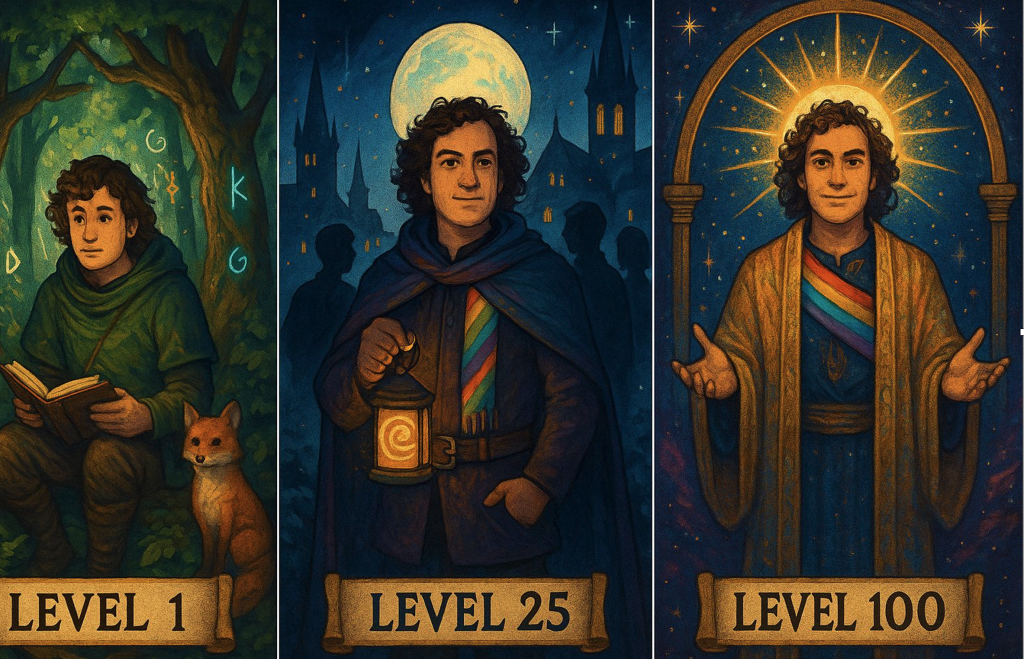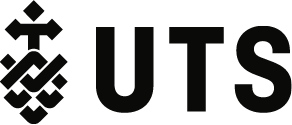We know students are already using GenAI. Quietly. Curiously. Sometimes strategically, sometimes tentatively.
What if we designed an activity that not only acknowledged this reality, but built on it? In many ways, this idea extends the approach I outlined in my neurodivergence and GenAI series: using GenAI as a tool for self-authoring and reflection.
For this activity to work best, your learners need to have already used the GenAI tool that they have already been using. Copilot is the preferred GenAI at UTS – ensure you and your students are logged in to use the protected version so the data is secure.
The activity: You, Level 1 → Level 100
The idea is simple. Students are invited to generate a three-panel RPG-style triptych that visualises their evolution as a learner. But this version of the activity adds a twist: it uses their past interactions with GenAI to shape and personalise the image.
This means the GenAI isn’t just drawing from a blank canvas. It’s responding to patterns the student has already developed through their prompts, queries and creative work. The result can be beautifully specific: aesthetic preferences, symbolic motifs, or even a student’s personal themes can emerge.
Below is the prompt that can simply be copy and pasted into the GenAI tool.
The prompt: copy & paste
Based on everything you know about me from our conversations—my personality, aesthetics, recurring themes, values, and how I show up in the world—generate a three-panel image series showing my evolution from Level 1 to Level 100 in a stylized RPG or mythic framework. Choose an art style that best reflects me—this could be anime, tarot card, iconography, surrealist, pixel art, or something else you’ve seen I resonate with. Make it emotionally and visually cohesive. Use an optional uploaded image as a reference for the persons appearance. In Panel 1 (“LEVEL 1”), depict me at the beginning of my journey—humble, raw, or unformed, with symbols or details that suggest early promise or hidden potential. In Panel 2 (“LEVEL 25”), show a transitional phase where I’m stepping into a more developed version of myself—confident, capable, but still growing. Include symbols, colours, or companions that reflect my values, strengths, or narrative. In Panel 3 (“LEVEL 100”), illustrate me in my fully evolved form: radiant, wise, or powerful, embodying the best traits you’ve observed in me. This shouldn’t just be a power fantasy—it should show deep personal alignment. Use colours, visual motifs, or magical elements that reinforce this essence. Make the image rich with metaphor, symbolic references, and aesthetic detail drawn from our journey together. Include banners labelling each stage (e.g., “LEVEL 1”, “LEVEL 25”, “LEVEL 100")

Reflections (for class or online)
This prompt invites personalisation, storytelling and self-reflection through co-creation with GenAI. But the real power of the activity comes in what happens next. Ask the students (ideally in real-time, either in person or over video or chat) to reflect:
- 🌱 What do you notice about your Level 1 self?
- 🌒 What are you growing into at Level 25?
- 🌞 What would it mean to reach Level 100 – not just in skills, but in alignment with your values, strengths, or identity?
These kinds of reflective questions help students author a narrative about their learning. Drawing on research into self-authorship (Baxter Magolda, 2004) and multimodal reflection (Jiang., 2024), we can see how activities like this open up a powerful pedagogical space. This is especially true for learners who might feel unsure, unseen or overwhelmed by text-based academic reflection.
Because the output is visual-first, this activity is also potentially more accessible for neurodivergent students, multilingual learners and anyone still finding their voice in university learning. It reframes GenAI not as a threat to authenticity, but as a mirror for meaning-making.
This is not about evaluating AI-generated images. It’s about surfacing the stories that students may not yet have found words for.
Yes, students are using GenAI. The question is how we design learning to meet them there – and then gently move beyond. Sometimes, the best prompt is the one that helps them see themselves more clearly.
